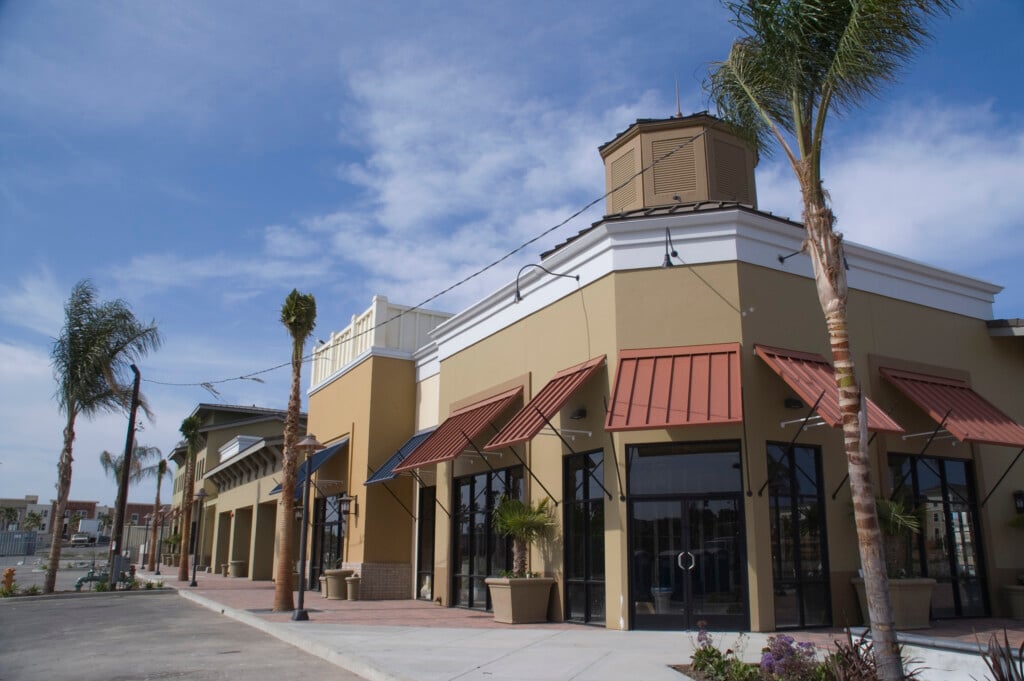Chasing the Rabbit
In Florida, growth outpaces infrastructure

Phillip Gainer was frank.
“We have so many needs statewide that they outweigh our ability to stay ahead of them,” said the secretary of Florida Department of Transportation District 3, which extends from Escambia County east to Jefferson County. “We’re often in a position where we’re catching up. There is so much development and growth in the coastal areas. ”
And, Florida has 1,350 miles of coastline.

Philip Grainer. Photo courtesy of
Florida Department of Transportation
District 3’s efforts to compete for state transportation funding are complicated by the fact that while it is home to two of the 10 fastest-growing counties in the state — Walton and Santa Rosa — its population is the smallest among the state’s seven transportation districts.
Under the circumstances, the best any district can do is to apply a process for prioritizing projects and knock them off the list as funds become available.
That prioritizing work with regard to most types of transportation infrastructure, or “facilities” in DOT parlance, is accomplished by Transportation Planning Organizations. There are four in the district.
The Florida-Alabama TPO, so called because Baldwin County, Alabama, figures in its considerations, is chaired by Escambia County Commissioner Robert Bender; it comprises Escambia and Santa Rosa counties. The Bay TPO, limited to Bay County, is chaired by Callaway Mayor Pamn Henderson. Wakulla County Commissioner Quincee Messersmith chairs the Capital Region Transportation Planning Agency, which includes Gadsden, Jefferson, Leon and Wakulla counties. An Okaloosa County commissioner, Nathan Boyles, chairs the Okaloosa-Walton TPO.
“The TPOs set priorities for their areas in categories that range from traffic signals and intersections to multi-use trails and capacity projects,” Gainer explained. He added that the district, itself, makes decisions regarding resurfacing work and bridge replacements. In addition, the district assesses requests for projects made by rural cities and counties that are not represented on a TPO. In District 3, those counties are Calhoun, Franklin, Gulf, Holmes, Jackson, Liberty and Washington.
Decisions about interstate maintenance are made on a statewide basis.
Gainer mentioned, too, Strategic Intermodal System (SIS) funding as a factor in completing projects in areas where population densities are not currently high but growth is coming.

Illustration by Sierra Thomas
The SIS is a high-priority network of transportation facilities deemed important to the state’s economy and mobility. Created in 2003, it focuses transportation resources on facilities that are key to interregional areas and interstates. The SIS is the state’s highest priority for transportation capacity investments — typically the addition of traffic lanes — and a primary vehicle for implementing the Florida Transportation Plan (FTP), the state’s long-range transportation vision and policy plan.
“SIS is how we have been able to four-lane highways 331, 79 and 77 between U.S. 98 and I-10,” Gainer said.
He concedes that some projects may proceed while not registering as priority concerns in the minds of most motorists. The construction of a $5.6 million pedestrian underpass and related improvements at County Road 30A and U.S. 98 in Walton County falls into that category.
“We have different categories of priorities including pedestrian facilities,” Gainer said. “Walton County came to us after the underpass had been made a priority by the Okaloosa-Walton TPO. They partnered with us financially, so we didn’t pay for all of the right of way and all of the facility. By bringing funds to the table, they made it possible for us to move from a conventional pedestrian crossing to a tunnel.”
Gainer said contributions made by residents, businesses and local units of government and special legislative appropriations all may figure in covering costs for transportation projects.
“Sometimes, a local government will fund a project now for reimbursement later,” he said. “If there is a signalized intersection that needs to go in, our process takes a little bit longer, but if a county wants to put one in, like at an intersection of U.S. 98 and a county highway, we’ll allow them to put that signal in as long as it meets our design specifications.”

The construction of a $5.6 million pedestrian underpass at County Road 30A and U.S. 98 is underway to improve both pedestrian and vehicular safety. Photo courtesy of FDOT District 3
Gainer said construction in Bay County of a bridge over Crooked Creek and a new State Road 388 leading directly from the mega Latitude Margaritaville Watersound development to the Northwest Florida Beaches International Airport is an example of choosing an alignment that was less expensive than expanding an existing roadway.
“If you look at 388 from the airport to 79, there are a lot of homes along that stretch, and if you want to four-lane a two-lane facility, you need a lot of additional right of way,” Gainer pointed out. “Sometimes, it’s easier to get the necessary right of way in a new area so that you don’t have to buy each residential house or take people’s front yards. From a permitting standpoint, it’s easier to get pond sites away from homes.”
Travel highways including State 79, and you may see ponds surrounded by chain-link fencing. They serve as detention and retention ponds that collect stormwater runoff and allow for the settling out of pollutants.
The six-laning of U.S. 98 in Destin and now Panama City Beach are examples of projects that may take 10 to 12 years to complete, beginning with feasibility and environmental analyses. Right-of-way acquisition may consume two years, especially if eminent domain proceedings are involved, Gainer said.
When construction proceeds, the DOT endeavors to minimize disruption of traffic flows that may be viewed by some people in a project area as protracted.

The SR 388 Roundabout provides a safer way to move in and around the Northwest Florida Beaches International Airport. Photo courtesy of FDOT District 3
In four-laning a road, Gainer said, DOT may strive to acquire enough right of way so that when it is eventually six-laned, the expansion can take place in the middle of a corridor, thus minimizing impacts. Additionally, he said, paving work may be scheduled for nighttime hours, but doing so does present additional risks to contractors’ employees.
“If we are working in a residential area, people don’t like all the banging of the tailgates and the equipment noise when they are trying to sleep, but we ask for their patience and remind them that resurfacing occurs only once every 12 or 15 years,” Gainer said.
Maintenance of I-10 is always a District 3 priority.
“It’s the backbone of our district,” Gainer said. “It is important to the ports in the region. We’re looking at six-laning some areas around Tallahassee and in Escambia County to move the trucks through as best we can.”
At the suggestion that I-10 is better maintained than I-75, which is said many times to be in a state of “perpetual construction,” Gainer laughed. Heartily.

Illustration by Scott Schiller
Phillip Gainer presides as secretary over Florida Department of Transportation District 3, which extends from Escambia County east to Jefferson County. The predominantly rural district is large in terms of square miles but is the smallest transportation district in the state in population. In the statewide competition for funding, District 3 has to compete with more populous and often more politically powerful districts. Interstate 10 runs the length of District 3 and is a perennial maintenance priority.


